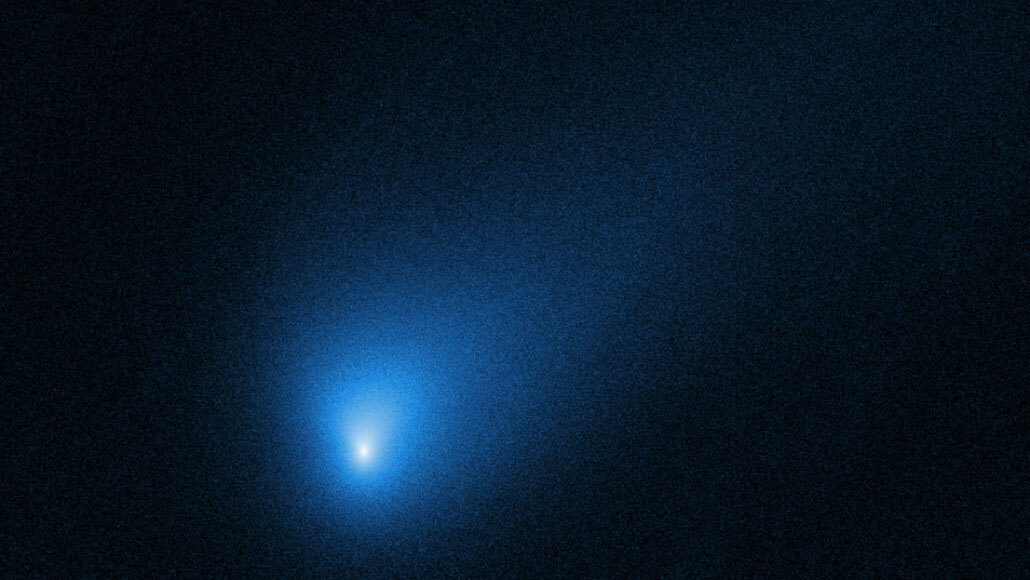
Comet 2I/Borisov, the solar system’s second known interstellar visitor, probably hails from a planetary family that is chemically distinct from our own.
During Borisov’s brief sojourn through the inner solar system, it was enveloped in its own tenuous gas cloud created as the sun baked ice on the comet’s surface (SN: 10/14/19). New observations of that gas show that the amount of carbon monoxide compared to water was off the charts — at least three times as high as any locally sourced comet that has ventured into the inner solar system.
Martin Cordiner, an astrochemist at NASA’s Goddard Space Flight Center in Greenbelt, Md., and Dennis Bodewits, planetary scientist at Auburn University in Alabama, report the findings in two papers published online April 20 in Nature Astronomy.
Astronomers don’t know where Borisov came from. It was discovered in August 2019 on a trajectory tracing back to somewhere in the constellation Cassiopeia (SN: 9/12/19). Seeing a unique opportunity to get a glimpse at the chemistry of another star system, researchers sifted through data from the Atacama Large Millimeter/submillimeter Array in Chile and the Hubble Space Telescope. Both observatories checked in on Borisov shortly after its closest pass by the sun in December, when the comet was just beyond Mars’ orbit.
To retain so much carbon monoxide, Borisov must have formed cold and stayed cold throughout its life. That means it likely formed in the remote outskirts of a carbon-enriched planetary system, the researchers say, far enough from its star so that carbon monoxide could readily freeze. A close run-in with a large planet may have kicked it out of its home. It then stayed brutally cold — never breaking 25 degrees Celsius above absolute zero (the temperature at which solid carbon monoxide turns to gas) — as it wandered among the stars.


